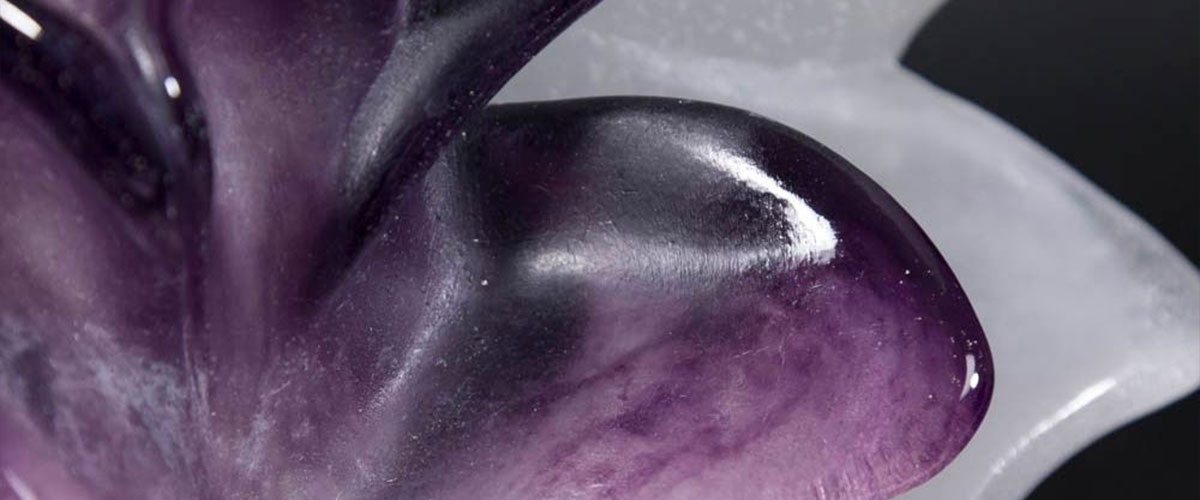Salvador Dalí produced glass sculptures called pâte de verre from 1968 to 1984 for the Daum Crystal company in France. A selection of ten sculptures from our collection is on display. Daum is a prestigious French glass company recognized as one of the major forces for innovative glassmaking beginning with the Art Nouveau movement of the early 1900s to present.
Daum commissioned a few famous sculptors, designers, and painters to design limited editions sculptures for their company in 1965. The collaboration between Daum and Dalí began in 1968 with his work, Fleur du mal, a title drawn from the collection of poems by the French 19th century poet, Charles Baudelaire. Dalí was enthralled by the translucence that can be achieved in pâte de verre. In Porte-manteau-montre, 1971, Dalí utilizes the wax-like appearance of the glass to reproduce his iconic image of a limp watch draped over a metal coat hanger based on his 1931 painting, The Persistence of Memory. Dalí revisits his fascination with the Venus de Milo in Le désir hyperrationnel produced in 1984 (shown right). Early in his career, Dalí was inspired by Sigmund Freud’s psychoanalytic interpretations of dreams and the unconscious. In hisVenus de Milo with Drawers, 1936 (shown right) Dalí cut six drawers into a model of the famous nude of Aphrodite. The opening in the sculpture represents an area of the unconscious which only psychoanalysis is able to penetrate. Dalí immortalizes old obsessions but also engages in a new dialogue with the modern medium of pâte de verre glass.
About the Pâte de verre Process
Pâte de verre (literally “glass paste”) is ancient glassmaking technique dating back to the Egyptians over 3,500 years ago. The technique was rediscovered in the 19th century but was never widely used and only in small productions. The process utilizes the “lost wax method” of casting, the same process used to make cast bronze sculptures since the ancient Greeks. (more about the “lost wax method” wiki)
The artist’s original sculpture is reproduced in wax, surrounded with a plast mold which can withstand high temperatures. When the mold is hardened, the wax is heated and melts. Granules of glass crystals are placed in the mold and heated in a furnace to 1800ºF for a week. The crystals melt and spread throughout the mold exactly reproducing the original. The mold is cooled for 5 days and then broken open. The sculpture is chased, or smoothed, to remove imperfections under the direction of the artist. The variously colored glass crystals react with metallic oxides forming a myriad of tiny bubbles that reflect and refract, creating a mysterious inner light in the glass.
Special thanks to media sponsor Blu Tampa Bay and sponsor Painters on Demand.
